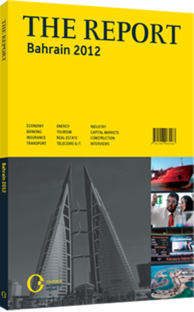Ship shape: Ports set to benefit from long-term growth in regional markets
Capitalising on its geographical advantages, Bahrain invested in the sort of high-quality, efficient transport infrastructure demanded by international commerce well before its regional rivals. The country hosted the first airport in the Gulf and was an early leader in developing internationally competitive ports. Today, this first-mover advantage continues: the Kingdom’s port infrastructure and business friendly regulatory environment gives Bahrain a great advantage in its aspiration to be the “Singapore of the Gulf”, the premier centre for shippers serving the growing markets of the region.
PORT OF CALL: The lynchpin of Bahrain’s port system is the Khalifa Bin Salman Port (KBSP), which was opened in 2009, is overseen by the General Organisation of Seaports (GOP) and operated by The Hague-based APM Terminals. The port has already paid dividends for the Kingdom: large container ships availing themselves of KBSP’s 15-metre-deep docks can unload at Bahrain’s port for redistribution to Gulf markets. Saudi Arabia is accessible both by sea and overland via the nearby King Fahd Causeway (KFCW), while Kuwait, Qatar and Iraq can also be reached in smaller vessels from the KBSP.
Though traffic has increased on the KFCW, KBSP remains a well-established and popular point of entry to the Saudi market. By causeway and land, it is only 40 km from the Saudi border and KBSP’s facilities are comparatively more sophisticated than those on offer in Saudi ports. APM’s vision is to transport transit cargo via a transit lane to the Eastern Province. If planned improvements to land infrastructure and sea lanes come to fruition, Bahrain will be extremely well-positioned to be the most efficient port for shipping to the northern Gulf.
LOGISTICS ZONE: Bahrain’s well-regarded regulatory structure abets its geographic and infrastructural advantages as a trans-shipment centre. The Bahrain Logistics Zone (BLZ), a 1-sq-km warehouse located within 1 km of KBSP and just 13 km from Bahrain International Airport, is a Customs-bonded zone with 24-hour security, making it a competitive spot for time-sensitive products, such as food and pharmaceuticals. Operators report that clearing shipments in Bahrain is cheaper and quicker than competing Gulf ports, and its allowance of 100% foreign ownership for port operators has also helped to make Bahrain advantageous.
While the unrest over the past year has had an effect on cruise traffic, there have been no reports of security issues at the port, which is located at the north-east tip of the island. Although there were labour shortages during the period of unrest, KBSP did not close for a single day. Its container throughput for 2011 was 374,823 twenty-foot equivalent units (TEUs), a slight increase on 2010.
IN WITH THE OLD: The coming years may involve growth outside of KBSP as well. The GOP is also initiating a plan to refit its former centre, the Mina Salman Port, which ceased commercial operations in 2009. An undersupply of bulk building materials, in particular cement, has driven up the costs of construction in Bahrain, as it imports almost all of its materials from neighbouring countries by small vessels and barges. The recent imposition of import quotas by Saudi Arabia, which supplies 75% percent of Bahraini cement, has hit the Kingdom hard.
The redevelopment of Mina Salman Port, which involves a substantial redesign and new dredging to accommodate larger ship draughts is currently under development. Whilst works are ongoing, the revamped port saw its first successful shipment in January of 2012. However, the short-term profitability of this effort is uncertain given falling imports of bulk materials and flat growth in the domestic construction industry over the last few years.
While Bahrain’s ports have not been untouched by the global economic downturn and domestic unrest, they are nonetheless well-situated to profit from middle- and long-term growth of Gulf markets.
You have reached the limit of premium articles you can view for free.
Choose from the options below to purchase print or digital editions of our Reports. You can also purchase a website subscription giving you unlimited access to all of our Reports online for 12 months.
If you have already purchased this Report or have a website subscription, please login to continue.

